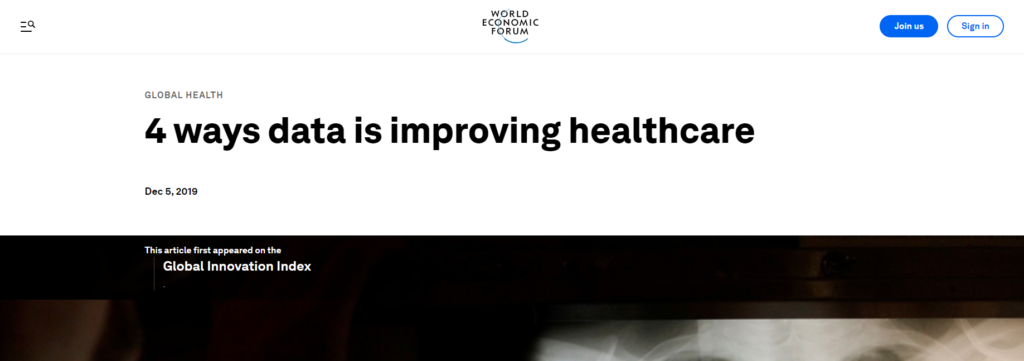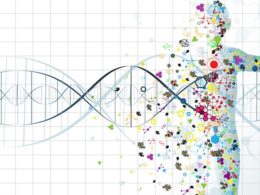October 19, 2023
One page summary
What is the message?
Hospitals generate an enormous volume of data each year, but a substantial portion remains untapped. Harnessing the power of data analytics in healthcare is transforming medical services without the need for additional staff or infrastructure.
This article explores four key ways data analysis is enhancing healthcare, from improving X-ray quality to enabling more efficient collaboration among specialists and tailoring therapies for individual patients, ultimately enhancing the organization and operation of hospitals.

Key Takeaways:
Enhancing X-ray Quality:
Software applications are helping reduce the reject rates of X-ray images, making them more efficient and accurate. The automation of the image-quality assessment process not only saves time and resources but also ensures that patients receive the appropriate care more quickly.
Facilitating Collaboration:
Collaboration in oncology has often been hampered by the fragmented nature of data collection and analysis. Partnerships, such as the one between Roche Diagnostics and GE Healthcare, are streamlining patient data, including genomics, tissue pathology, and imaging, to improve the efficiency and effectiveness of tumor board meetings and individualize patient treatments.
Personalizing Therapies:
The integration of data is revolutionizing healthcare by retrospectively analyzing the immunotherapy responses of cancer patients based on a wide range of data, including genomics, tumor, cellular, proteomic, and imaging information. Artificial intelligence (AI) applications help physicians identify the most suitable treatments for individual patients.
Optimizing Hospital Operations:
Some hospitals are implementing data-driven Command Centers similar to NASA mission control to better manage their operations.
By analyzing various data streams, these centers help predict events in the next 24 to 48 hours, improving capacity, safety, quality, and patient wait times.
Examples and Statistics
- Chest X-rays represent 40% of the 3.6 billion imaging procedures performed globally each year.
- Up to 25% of X-ray images are rejected due to poor quality or patient positioning.
- Software applications have reduced the rejection process from 230 mouse clicks and seven hours of work to a more efficient automated system.
- Partnerships between healthcare companies, such as Roche Diagnostics and GE Healthcare, are integrating diagnostic data and medical imaging, streamlining the process of tumor board meetings.
- GE Healthcare is partnering with Vanderbilt University Medical Center to use AI-powered apps for safer and more precise immunotherapies by analyzing patients’ data.
- Hospitals are adopting NASA-style Command Centers to manage their functions and predict future events. This centralized digitization is seen as the future of hospital operations.
As healthcare continues to evolve, leveraging data analytics is key to improving patient care and optimizing hospital operations.
DEEP DIVE

4 ways data is improving healthcare
World Economic Forum
December 5, 2019
Hospitals produce 50 petabytes of data per year. This mass of information comprises clinical notes, lab tests, medical images, sensor readings, genomics, and operational and financial data. At the moment, 97% goes unused – but this is changing, with great potential to transform the quality of medical care.
Here are four ways data analysis is improving healthcare without adding staff or beds.
1. Boosting the humble X-ray
The X-ray is the oldest form of medical imaging, and still the most commonly used. Chest X-rays alone represent 40% of the 3.6 billion imaging procedures performed worldwide every year. But X-ray “reject rates” – the number of images that cannot be used due to poor image quality or patient positioning – can approach 25%.
To address this, software engineers have developed an application that helps clinicians pinpoint the root causes of rejected images. The app was piloted at the University of Washington Medical Center, and has automated a process that once required 230 mouse clicks and nearly seven hours of work. Reducing reject rates saves time and resources while putting patients on the right path sooner.
2. Enabling collaboration
In oncology, the process of preparing for, conducting, and documenting tumor board meetings is frequently suboptimal and non-standardized. Each specialist aggregates data on a patient in a silo. As a result, meetings are spent switching back and forth between the different systems and technologies used across each discipline.
To address this, an alliance between Roche Diagnostics and GE Healthcare is combining and analyzing patients’ diagnostic data — including genomics, tissue pathology, and biomarkers — with their medical imaging and monitoring data. From here, cloud-based data integrating software could fundamentally change the process of tumor board meetings, helping doctors make more informed, faster diagnoses and individualize treatments to each patient.
3. Tailoring therapies
Integrating data can have transformative effects across the entire healthcare ecosystem. GE Healthcare recently began a partnership with Vanderbilt University Medical Center (VUMC), to enable safer, more-precise immunotherapies.
The project will retrospectively analyze and correlate the immunotherapy responses of thousands of cancer patients with their demographic, genomic, tumor, cellular, proteomic, and imaging data. From here, AI-powered apps will help physicians identify the most suitable treatment for each patient.
4. Organising hospitals
A small but growing number of hospitals are implementing NASA-style mission control Command Centers to manage their functions and services. The goal is to address the capacity, safety, quality, and wait-time issues that have plagued healthcare.
A hospital Command Center pulls in streams of data from various systems, generating analytics that help staff predict what will happen in the next 24 to 48 hours. The data is displayed on Command Center screens and on tablets and mobile devices. This allows staff to focus on delivering care, rather than organizing it.

Image: Deloitte
Industry experts say that this type of digitization is just the beginning. DELOITTE’S CENTER FOR HEALTH SOLUTIONS report cites centralized digital centers as something the hospital of the future will need to function in a world of evolving technologies, demographic shifts, and economic changes.
The GLOBAL INNOVATION INDEX 2019 is the result of a collaboration between Cornell University, INSEAD, and the World Intellectual Property Organization (WIPO) as co-publishers, and their Knowledge Partners, Confederation of Indian Industry, Dassault Systèmes, SEBRAE, Brazilian Micro and Small Industry Support Services, and Brazilian Confederation of Industry.
Originally published at https://www.weforum.org












